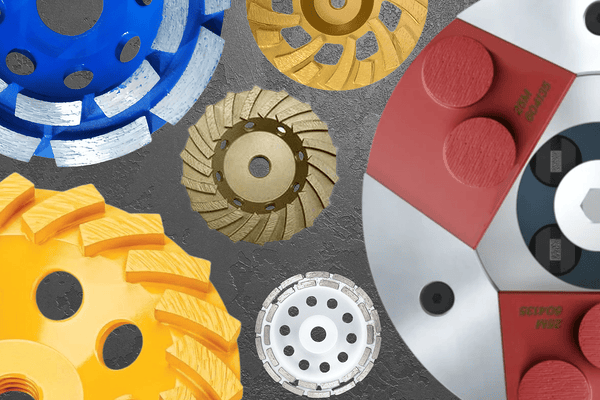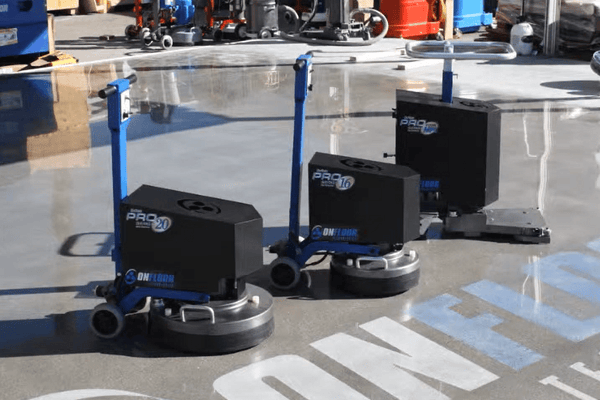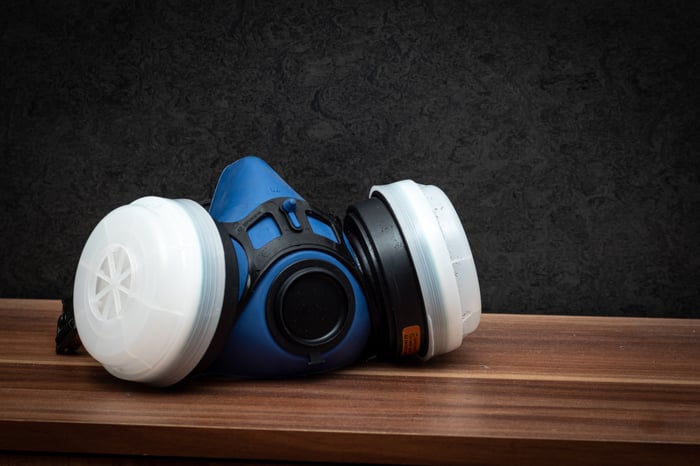Mastic is a versatile adhesive that is known for its robust bonding properties and is commonly used to affix tiles, carpet flooring, wall coverings, and concrete surfaces. However, over time, mastic can deteriorate, leaving behind a stubborn residue that not only mars the aesthetics of your concrete but can also impede new installations.
Whether you're renovating a space or simply need to refresh the look of a concrete floor, understanding how to effectively remove mastic is a valuable skill. Navigating the task of mastic removal doesn't have to be daunting, especially with the right guidance and a bit of elbow grease!
This comprehensive DIY guide is crafted for novices and pros alike, equipped with industry insights, step-by-step instructions, and time-saving tips for turning even the most adhesive-laden concrete into a clean canvas, ready for renovation.
Understanding Mastic and Its Adhesion on Concrete
Before we roll up our sleeves, it's critical to grasp what mastic is and why it can be so tough to remove from concrete.
Mastic is a generic term for any sticky, adhesive material used primarily as a filler and sealer, such as carpet glue. It's widely applicable in the construction and automotive industries, and it's among the go-to options for bonding applications due to its ease of use and durability.
Several factors contribute to mastic’s resilience, including the type of mastic used, the characteristics of the concrete substrate, and the application method. Understanding these factors can inform the approach you take to remove mastic effectively without causing damage to the underlying concrete.

Tools and Materials Needed for Mastic Removal
A successful mastic removal project requires the right arsenal of tools and materials.
Here's a rundown of the essentials:
Tools
- Heavy-Duty Scraper: A long-handled scraper with a wide blade is indispensable for the initial, manual phase of mastic removal.
- Utility Knife: Use a sharp utility knife with a retractable blade for precision work on small or stubborn patches of mastic.
- Sander or Buffer: After bulk removal, a power sander or buffer equipped with a mastic removal disk can help to clear away the finer remnants.
- Industrial Floor Grinder: For larger areas and commercial applications, a floor grinder with specialized mastic removal attachments is the go-to tool for efficient results.
Materials
- Mastic Remover: Specialized chemicals such as a solvent-based mastic remover are ideal for breaking down the mastic, making it easier to scrape off the glue residue.
- Absorbent Cat Litter: Yep, you read that right. This little secret can help manage and contain the residue and avoid creating a slippery mess.
Safety Equipment
- Respirator: Protect yourself from the potentially noxious fumes of adhesive removers.
- Safety Glasses and Gloves: Shield against eye irritants and skin exposure to chemicals.
By gathering the correct tools and protective gear, you set yourself up for a safe and efficient mastic removal project.
Step-by-Step Guide to Removing Mastic from Concrete
Now, it's time to get into the nitty-gritty of mastic removal. The process can be broken down into several manageable steps that will ensure a systematic and successful outcome.
Step 1: Preparation
- Clear the Workspace: Remove all furniture, fixtures, and any obstacles from the space you'll be working on. The more open and clear the area, the easier it will be to maneuver during the project.
- Ventilate the Area: Open windows and use fans to create a cross breeze and reduce dust. Adequate ventilation is crucial for air quality, especially when working with adhesive removers.
- Protect Adjacent Surfaces: Cover nearby walls, surfaces, and items with protective material to prevent them from coming into contact with the adhesive remover or any mastic residue.
Step 2: Softening the Mastic
- Select an Adhesive Remover: Choose a solvent-based adhesive remover such as acetone, and follow the manufacturer's instructions for application and dwell time. Some removers may require you to leave the area for safety reasons, so be sure to plan accordingly.
- Apply the Adhesive Remover: Use a brush or roller to apply a liberal amount of the remover directly onto the mastic with an acetone-soaked brush (or whatever chemical stripper works best for you). Work in manageable sections to maintain control over the process.
- Allow for Dwell Time: The remover needs time to penetrate and soften the mastic. This can take anywhere from 15 minutes to several hours, depending on the stubbornness of the adhesive.

Step 3: Mechanical Removal Methods
- Start Scrubbing: Begin with the heavy-duty scraper to scrape away the old mastic that has softened. Work in small sections, and use firm, consistent pressure to avoid creating gouges in the concrete.
- Employ Precision: For tighter spots or areas with residual adhesive, use the utility knife to make careful incisions and then scrape away with the scraper.
- The Buffing Stage: Once you've removed the majority of the mastic, switch to an industrial concrete grinder to achieve a smooth, clean finish. This step may generate fine dust, so continue to wear your respirator and practice safety measures!
Step 4: Cleaning and Final Touches
- Clean the Surface: Use a damp cloth or sponge to wipe down the concrete subfloor and remove any remaining solvent or mastic. It's important to neutralize the surface to prepare it for a new application or installation.
- Dry the Area: Allow the concrete to dry completely before proceeding with the next step. If there's residual moisture, it can prevent new adhesives from bonding effectively.
By following these systematic steps, you can effectively restore a concrete surface to its original state, leaving it ready to take on a fresh, new look.
Tips and Tricks for Efficient Mastic Removal
Refine your mastic removal skills with these invaluable tips:
- Choose the Right Remover: Not all adhesive removers are created equal. Research and choose a product designed for the type of mastic you're dealing with.
- Test in a Small Area: Before widespread application, conduct a test on a small, inconspicuous area of the concrete to ensure the product doesn't react negatively with the surface.
- Monitor the Dwell Time: If the remover is left on for too long, it may dry out and require reapplication. Conversely, if removed too soon, it may not have fully penetrated the mastic.
- Stay Consistent: Whether it's the application of the remover or the pressure applied during scraping, maintaining a consistent approach across the entire removal process will yield the best results.
FAQs
Q: Is there a non-toxic alternative to chemical adhesive removers?
A: Yes, there are eco-friendly and natural options available, such as citrus-based cleaners or steam cleaning methods.
Q: Can mastic be removed without using chemicals?
A: Yes, it is possible to remove mastic and glue manually with the use of hot water and elbow grease, but it may be a more time-consuming and labor-intensive process.
Q: Can I reuse my scraper or buffer for other projects after using them for mastic removal?
A: To prevent any residue transfer, we recommend thoroughly cleaning and disinfecting these tools before using them on other projects.

Q: Is it necessary to wear a respirator during the entire mastic removal process?
A: Workplace safety professionals recommend wearing a respirator when handling adhesive removers and during any sanding or buffing stages. However, once the concrete has been cleaned and dried, it may not be necessary for additional respiratory protection.
Q: How long does it typically take to remove mastic from the concrete floors
A: The duration of the removal process can vary depending on the type and thickness of the mastic, as well as the size of the area. On average, it can take a few hours to complete the job.
Q: Can I use a pressure washer to remove mastic from concrete?
A: It is not recommended to use a pressure washer for mastic removal because it can potentially damage the tile or concrete surface, as well as cause splattering of the mastic residue.
Q: What should I do if there are stubborn areas of mastic that won't come off?
A: If mechanical methods of tile adhesive (such as scraping and sanding) are not effective, you may need to use a stronger solvent-based adhesive remover or seek the help of a professional.
Q: Is there anything I can do to speed up the drying process of the concrete?
A: If you are in a time crunch, you can use fans or a dehumidifier to help dry the concrete faster. Just be sure to allow enough time for it to completely dry before proceeding with any installations!
Q: What is black mastic?
A: Black mastic is a type of adhesive commonly used to install flooring, tiles, or carpeting. It gets its name from its dark color and can be more challenging to remove than other types of mastic.
Conclusion
Mastic removal is a task that DIY enthusiasts and professionals will inevitably encounter in various home improvement and construction scenarios. Though the process may seem overwhelming at first, with the right preparation, materials, and methodical approach, it can be conquerable.
Recall the importance of each step—from preparation and application to mechanical removal and post-cleaning—to achieve a seamless mastic removal that leaves your floors and concrete surfaces smooth and immaculate. With this guide in hand, armed with best practices and expert guidance, there's no need to fear the mastic—ready your tools and take on the challenge with confidence.
Ready to tackle your next mastic removal project? Check out Onfloor's selection of high-quality, professional-grade floor grinders. Shop now and get ready to say goodbye to stubborn adhesive residue!
0 comments